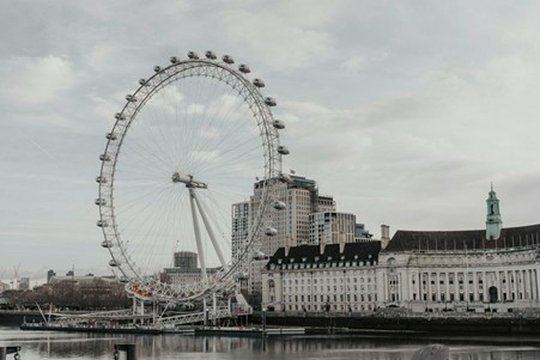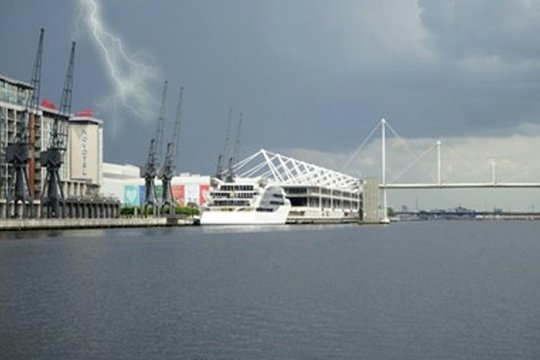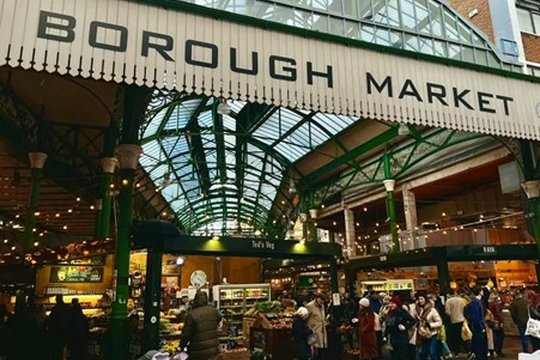Viewing a flat in London for the first time can be a lot to take in, especially if you’re not used to how the UK rental system works. It’s easy to get swept up but first impressions can be misleading. A careful, methodical viewing helps you spot the right property. In this article, we'll outline the key steps to find a rental property in the capital that really works for you.
Checks Inside the Flat
Check the Water Pressure
Turn on every tap and the shower while you're there. Poor water pressure is common in older buildings and top-floor flats. Run the hot water and see how quickly it warms up and how strong the flow is. Watch how the water drains - slow drainage or gurgling could point to blocked pipes or plumbing issues.
Look for Damp or Mould
Scan the corners of rooms, especially near windows and in bathrooms. You're looking for discoloured patches, cracked paint, or a musty smell. Be wary of freshly painted areas as it might be covering up a damp problem rather than solving it. Run your hand over suspect spots; they shouldn’t feel soft or damp.
Inspect the Windows
Try opening and closing each window. Make sure the frames aren’t warped or damaged and that they lock securely. If the flat has single glazing, it may be less energy-efficient and noisier whereas double glazing is better for keeping heat in and outside sounds out.
Ask About the Heating
Find out what kind of heating the flat uses and ask how old the boiler is. The estate agent showing you the property will be able to tell you when it was last serviced too. If the radiators are on, check they’re warming up evenly. Bathrooms should have some form of heating as well, especially during colder months.
Check the Electrics
Look around each room for working plug sockets and switches. Loose or damaged fittings can signal wider electrical problems. A reputable letting agent or landlord will be able to show you proof of a recent electrical safety check too as these are required every five years.
Test Appliances and Storage
Make sure all appliances listed in the advert are present and in working order. Try opening the fridge, running the washing machine, and switching on the cooker. Storage can be tight in many London flats, so open wardrobes and kitchen cupboards to get a true sense of space.
External and Environmental Checks
Pay Attention to Noise
Stop and listen. Can you hear traffic, planes, or noisy neighbours? If the agent has music or the TV on, ask to turn it off. If you’re serious about the flat, try to visit again at a different time of day to get a better sense of noise levels and local activity.
Check Mobile Signal and Internet
Walk around the flat and check your phone reception. Signal can vanish completely in some older buildings. Ask about internet providers in the area and what speeds are available, especially if you work from home or stream regularly.
Look at Locks and Security
Examine the front door lock, any secondary bolts, and the entry system to the building. Is there an intercom or key fob entry? Check how well-lit the street outside is at night. These details can help you feel more secure day-to-day.
Scan Communal Areas
Look at shared hallways, staircases, and the front entrance. Are they clean and well-kept, or run-down and neglected? Poor upkeep here could mean slow responses to repairs or other management issues once you move in.
Questions to Ask the Agent or Landlord
Who Manages the Property?
Find out whether you’ll deal with the landlord directly or through an agent. Get the name and contact details for whoever handles repairs. Ask how maintenance is reported and how quickly it’s usually resolved, especially outside normal working hours.
What’s Included in the Rent?
Clarify exactly what the rent covers. Are you responsible for bills like council tax, water, or internet? Some flats include extras while others don’t. Knowing upfront helps avoid surprise costs.
How Long Is the Tenancy?
Ask about the minimum rental term and whether there’s a break clause in the tenancy agreement, and what type of tenancy agreement you’ll have. Also check how much notice you’ll need to give to leave and whether renewals are likely. Understanding these terms now helps avoid awkward surprises later on.
Why Did the Previous Tenants Leave?
It’s okay to ask this directly. It might reveal whether the flat has recurring issues or if the area simply didn’t suit their lifestyle.
Looking at the Area
Walk the Local Routes
Go for a short walk to the nearest tube or bus stop. It helps you judge the actual journey time, not just what’s listed online. Location makes a big difference in rent; flats near transport links are usually in higher demand.
Check Local Shops and Services
Have a quick look around for supermarkets, GPs, chemists, or anything you rely on regularly. If it’s a 20-minute walk just to buy milk, that could wear on you over time.
Get a Feel for the Neighbourhood
Visit at different times of day if you can - weekday evenings and weekend afternoons will give you a clearer idea of what daily life is like.
Flat viewings can take time, but working with a reputable, experienced letting agent means you can avoid months of stress or unexpected expenses.
If you're looking for a property to rent in London, contact one of our local branches for personalised support and advice to find your new home.




